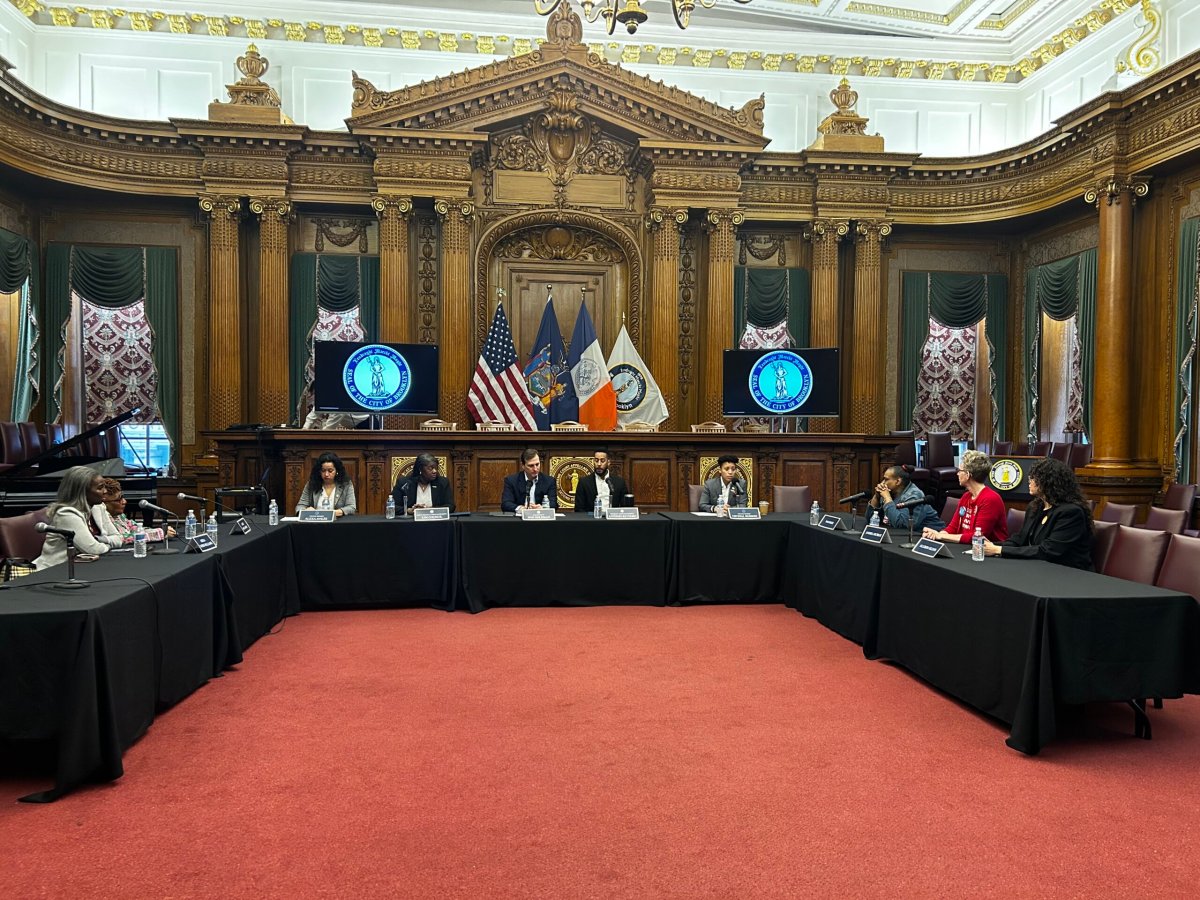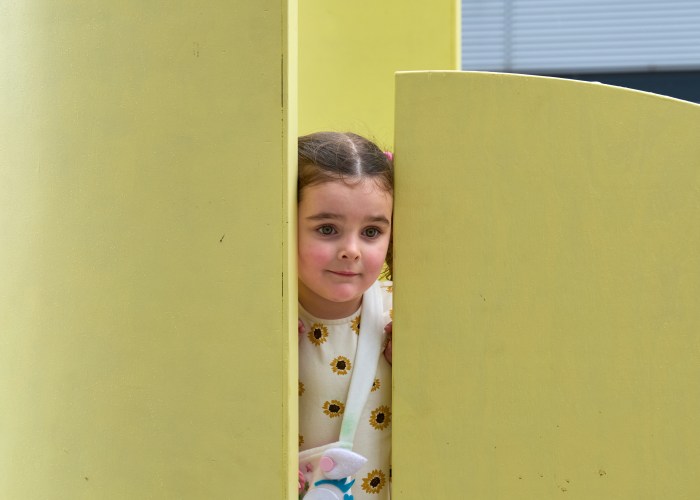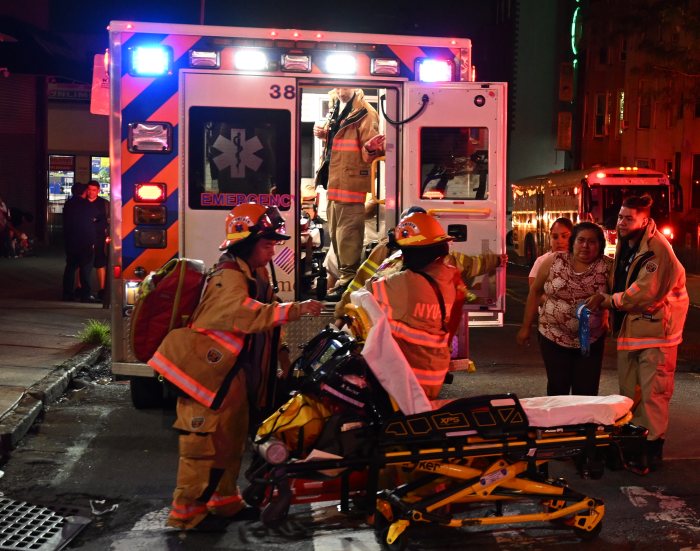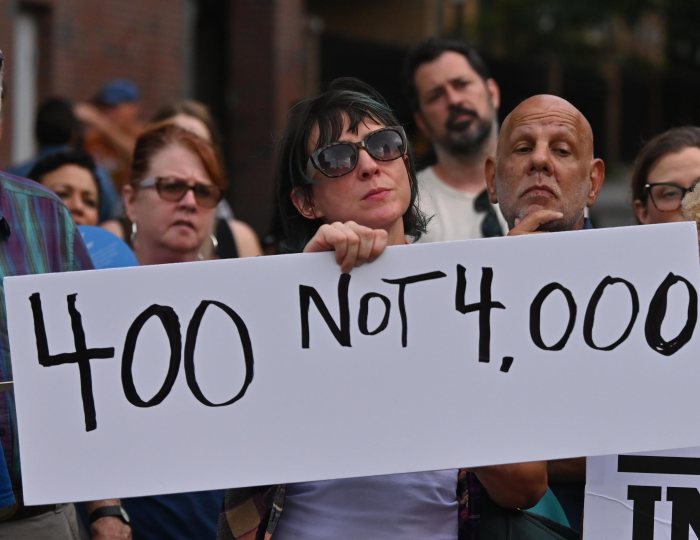Survivors of gun violence and victims’ families came together with Brooklyn politicians on Wednesday for a roundtable discussion in honor of National Gun Violence Survivors Week.
Those who have lost loved ones to gun violence share their personal experiences and urged organizers Congress Member Dan Goldman and Brooklyn Borough President Antonio Reynoso to invest in local and federal solutions — including community resources, social support services and intervention programs.
“That’s one of my big takeaways from this terrific roundtable — going back and digging into what kind of programs there are for survivors and victims’ families,” Goldman told Brooklyn Paper. “Several of these survivors made very good points that it’s not only horrifically traumatic but it also has a trickle-down impact on the communities more broadly.”
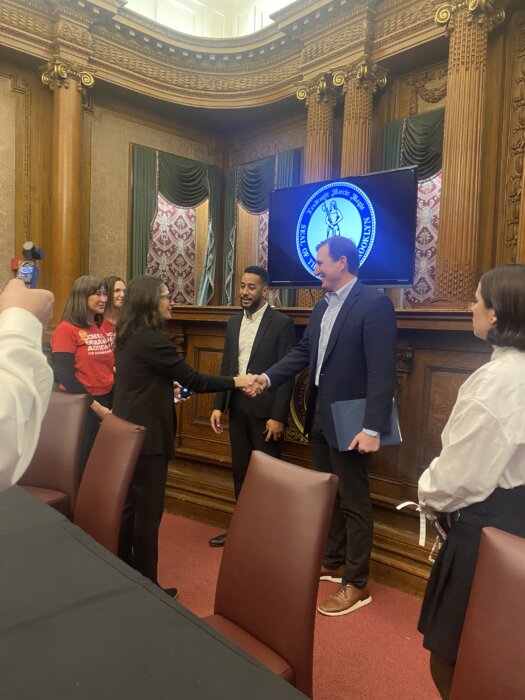
Pam Hight, a Brooklyn mother and member of Moms Demand Action, told roundtable participants that she lost both of her sons to gun violence. She said it was her involvement in a mother’s support group that helped her through her grief.
“My heart is broken into pieces but I smile every day because this is what we do,” Hight said. “The face of a smile does not mean we aren’t broken inside.”
But the presence of support services doesn’t negate the need for more intervention programs that can prevent shootings before they occur, Hight said.
“We will keep fighting but we’re tired. We shouldn’t be killing each other,” she said. “We should be out here [with] double dutch, barbecues, block parties. We stopped all that. Now we have to look over our shoulders on the trains, on the buses, walking out our doors.”
Council Members Crystal Hudson and Alexa Avilés also weighed in on the conversation, sharing how often they see gun-related crimes and deaths in their Brooklyn districts.
Shootings dropped significantly in Brooklyn in 2023, according to Police Department data — almost 25% compared to 2022. That number, Brooklyn District Attorney Eric Gonzalez announced in December, accelerated the borough’s three-year decline in both shootings and shooting victims, bringing homicide down by 10%.
But within the past month alone, there have been more than a dozen shootings — and at least 19 shooting victims — across North and South Brooklyn. Hours after the roundtable at Brooklyn Borough Hall, bullets flew across the borough, with five people reported dead in four separate shootings between Wednesday night and Thursday morning.
“I have attended more shooting responses and more funerals for victims of gun violence than I ever thought I would in just two years,” Council Member Hudson said Wednesday. “I know that in our communities and particularly in communities of color we are afflicted by gun violence at disproportionate rates. I’m committed to doing everything I can do.”
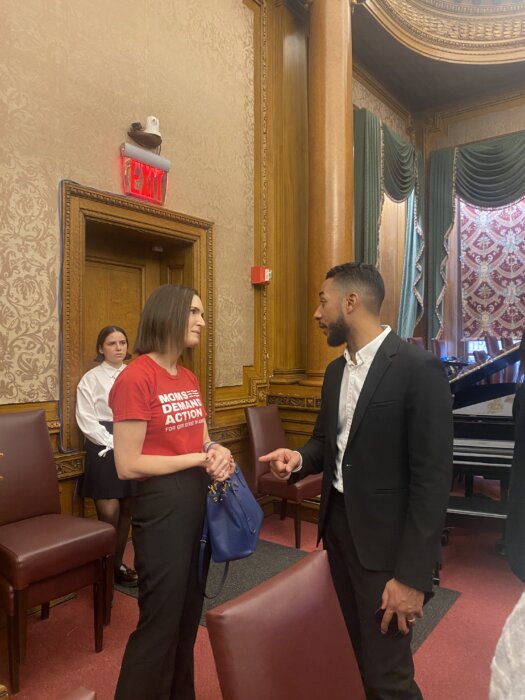
Reynoso hopes that, by coming together like they did on Wednesday, he and his colleagues in government can help change the way the community approaches shooting incidents. He also wants locals to see what is being done to support those who are left to deal with the traumatic aftershocks of such crimes.
“The shooting happened, 50 people show up, and we make a lot of noise so that it’s not normalized which is deeply valuable but what happens the rest of the year?” he told Brooklyn Paper. “It’s these support groups that help with the victims that are suffering through the violence.”
But the solution to high crime isn’t always increased police presence, Reynoso said — rather, it’s reinvestment in the neighborhoods.
“I would love to give people a tour of Park Slope and Brooklyn Heights. Just walking around the neighborhood, understanding the way the physical space is built, the way transportation is built, the way parks are built, how our schools look, the functional housing — all that matters,” he said. “If cops bring about safety, the places with the most cops would be the safest neighborhoods in our city — so if that’s not the solution, more cops are not the solution.”



